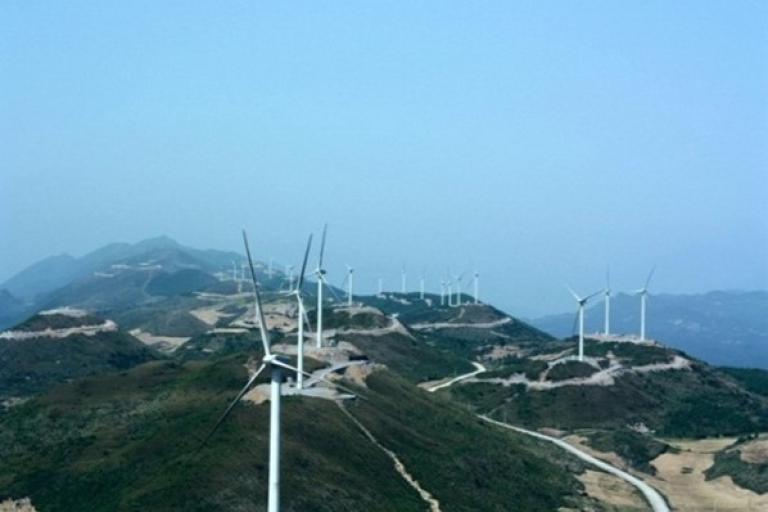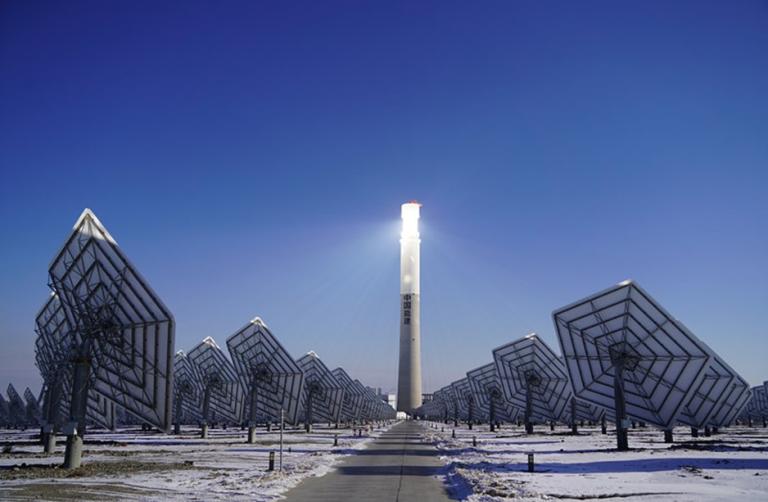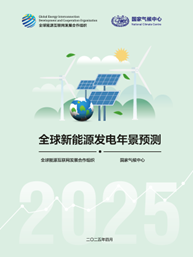Climate Powers Life Renewably
- Author(s):
- CMA: CHAO Qingchen, Director General, NCC; CHEN Jinyang, Director, International Cooperation and Training Centre (ICTC/RTC); Jacky ZHANG Yong, Director, Communication and Outreach Centre (COC); XU Wanzhi, Victor JIA Ning on 12 May 2025

The global energy mix is undergoing profound transformations with renewables, such as wind and solar power, accounting for an increasing share in the global power supply. Meteorology must factor closely into these weather-dependent energy sources if what is envisioned is balanced green, secure, efficient energy development in critical and practical terms. However, around the world, mostly short-term and ultrashort-term forecasts are primarily used for renewable energy sector, mainly for grid scheduling and power markets. The problem is that longer timescale predictions – a cross-disciplinary technical challenge – decline in accuracy as lead times extends. Annual-scale predictions remain particularly limited and scarce in research, while systematic global scale ones are virtually non-existent. Undaunted, the China Meteorological Administration’s (CMA) National Climate Center (NCC) has taken on this challenge.

Building on the WMO and International Renewable Energy Agency (IRENA) joint flagship report Climate-Driven Global Renewable Energy Potential Resources and Energy Demand, CMA has made a forward-looking to effort project “how global renewable energy generation will evolve in the coming year”. The inaugural NCC and Global Energy Interconnection Development and Cooperation Organization (GEIDCO) report is entitled Global Renewable Energy Generation Outlook 2025.
The CMA/GEIDCO report used CMA’s second-generation global climate model, supported by meteorological forecast data for locations with wind and solar farms around the world, and renewable energy generation capacity prediction models. These were integrated using different techniques, including Artificial Intelligence (AI). NCC and GEIDCO proposed a three-in-one MRP framework– i) Meteorological element forecasting, ii) Renewable energy site identification, and iii) Power generation capacity prediction –as an annual prediction methodology that is globally and selectively applicable.
The study projected global average wind power generation hours (GAWPGH) in 2025 at approximately 2 300, which is comparable to 2024, and global photovoltaic power generation hours (GPPGH) at 1 350, slightly higher than 2024. The boom in renewables suggests an increase in power capacity by 10–15% for wind and about 30% for solar respectively.
The report represents a milestone in cross-disciplinary innovation between energy and meteorology and marks the first-ever integration of annual meteorological forecasting with renewable energy generation prediction. By capturing trends in renewable energy output on a long-term scale with critical insights, it helps improve power supply security, address extreme weather events, optimize energy investments, and stabilize electricity markets.
With this initiative, NCC hopes to strengthen collaboration with stakeholders, including global partners, to deploy cutting-edge meteorological advancements in renewable energy quickly and deeply. Thanks to its modernization program for meteorological technologies and services, China seeks to contribute a greater number of “Chinese solutions” to the global energy transition and climate change mitigation and adaptation efforts.



